2009 European Brass Band Championships - Own Choice selections
27-Apr-20094BR has a look at the selections made by the bands to showcase their abilities to try and become European Champions.
For the first time since 1992, all 11 competing bands will perform different works as own choice selections this year.
As is the current fashion, two bands will premiere new works, whilst the remaining nine will reprise works that have been played 46 times at the contest since 1978.
Interestingly though, just one – ‘Extreme Make Over’ by Johan de Meij has been previously used as the set work – in Groningen in 2005.
Top of the list comes Wilfred Heaton’s ‘Contest Music’ which will be played for the 13th time since it was first used at the inaugural European Contest in London in 1978, performed by the Solna Band. It has proven to be a successful choice in winning the own choice section of the contest twice.
Close behind comes Philip Sparke’s ‘Harmony Music’ which will be performed for a 12th time this year (2 wins), with ‘Concerto Grosso’ (7th performance this year/2 wins) in third.
Then we have ‘Journey to the Centre of the Earth’ (1 win), ‘Masquerade’ (1 win), and ‘Vienna Nights’ (none) all getting their fifth outing, ‘Music for Battle Creek’ (1 win) getting a fourth airing and ‘Extreme Make Over’ (none) and ‘The Promised Land’ (1 win) being played a second time.
The two premieres this year are ‘Spirits of Puccini’ by Hermann Pallhuber and ‘Standing on the Shoulders of Giants’ by Peter Graham.
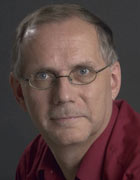 Harmony Music
Harmony Music
Philip Sparke
Harmony Music was commissioned by Boosey and Hawkes Band Festivals Ltd for the 1987 National Brass Band Championships of Great Britain, which was won by the Desford Colliery Dowty Band conducted by James Watson.
The title is both a play on the German “Harmoniemusik” with all its associations with bands in general as well as a reference to the overall tonal harmonic language of the piece.
The piece opens quietly with a long unison crescendo, interrupted by upward rushes from the basses and trombones, which introduce a fanfare like passage from the cornets. A sonorous chorale follows which builds from the lower band to a tutti climax.
There is a brief hint of faster music but before this is an immensely difficult euphonium cadenza which reaches both extremes of the instruments range.
The Molto Vivace is fast and furious as well as Francophile in style before the music subsides to a haunting homage to the composer Maurice Ravel which incorporates two accompanied cadenzas for cornet and horn. The opening returns before a shuddering climax that is tumultuous.
The soprano and trombones try in vain to stop the chaos before a Presto Coda ends the work. Even some 16 years after it was written it is a piece that requires immense amounts of skill and talent from both players and MD to make come off, and remains one of the composers most accessible and popular compositions.
Used at European:
1988: De Waldsang
1990: Black Dyke*
1991: De Waldsang
1992: BTM
1993: Cory
1994: Willebroek
1996: Manger Musikklag; Burgermusik Luzerne
1999: Yorkshire Building Society*
2002: Treize Etoile
2003: Manger Musikklag
*Black Dyke and Yorkshire Building Society won the own choice section of the contest
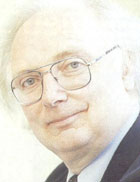 Masquerade
Masquerade
Philip Wilby
Masquerade was described as being ‘unplayable’ when it was first commissioned for the 1993 British Open Championships, which was won by the Williams Fairey Band conducted by Major Peter Parkes.
At that time it was indeed perhaps the technically most difficult piece of brass writing ever to test bands on the contest stage, and the Open that year saw the piece received quite coolly as it took many casualties.
Wilby took his inspiration from Verdi's last opera ‘Falstaff’ and the piece itself uses elements from the original story and music. Falstaff is a larger than life figure, full of boast and bravado, although this leads him into trouble and the ladies of the town get their own back on him at night in Great Windsor Park.
The music is highly descriptive (there is the use of a large whiskey bottle) but there are also some beautifully realised moments of passion and thoughtfulness. The rising of the moon over the Park as the goblins and elves assemble is perhaps some of Wilby’s best work whilst the ending demands the greatest amount of technical brilliance to come off.
The piece was used as the set work for the 2002 National Championships of Great Britain and on this occasion it proved much more accessible to bands and the audience, proof that brass band playing had progressed in the 10 years from its last domestic use.
Iwan Fox
Used at European:
1993: Williams Fairey*
1996: Midden Brabant
1999: CWS Glasgow
2003: Brighouse & Rastrick
* Williams Fairey won the own choice section of the contest
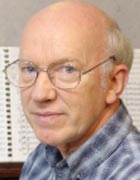 The Promised Land
The Promised Land
Kenneth Downie
The story of Moses leading the Hebrews out of Egypt to find the Promised Land is one of the most dramatic to be found in the Bible, and the hymn tune Guide Me, O Thou Great Redeemer sets the narrative to music in a stirring fashion. Kenneth Downie's The Promised Land uses fragments of this hymn as the stimulus for a set of variants.
Most pieces employing this genre either set out by establishing the theme and then developing variations or begin with a fragment of the theme and deliver the entire source material as a finale. However, Downie begins with fragments of the hymn and symphonically develops them without ever hearing the tune in its entirety.
The work, although continuous is in seven main sections, and the mood of each section is implied by a sub-title based on the Biblical account of the journey to the Promised Land. In addition to John Hughes music, Downie also uses segments of Myfanwy by Joseph Parry to develop his variants.
I. Exodus - The music begins in a spirited and lively way full of optimism, with only the slightest hint of the trials and tribulations lying ahead. A declamatory euphonium cadenza leads into the second variant:
II. Dreams and Nightmares - exposing fragmentary and disturbing echoes of Parry's Celtic song. The unorthodox use of the song's melodic intervals puts the listener on edge. This section reminds us of the opposing elements the Israelites experienced on their long journey; fear of starvation and aspirations of Canaan.
III. Barren Land - Although the Israelites were free they were living and travelling through the desert. This short variant is atmospheric and is a stark contrast to
IV. Miracles and hell's Destruction - probably the most tempestuous variant, played at high tempo initially portraying some of the miracles God empowered Moses to act, and gradually building via rhythmic discourse to dramatic conflict. After the excitement subsides the golden section of the piece is revealed;
V. The Land of Milk and Honey - This variant epitomises love and everything that is good. Solos and love duets set an idyllic scene.
VI. Dawn of a New Age - is a reprise of the opening section, capturing all of the initial drive and enthusiasm but now the fragments of "Bread of Heaven" are even stronger giving it an air of triumph. After a theatrical statement from the tuba the music solemnly processes to the celebratory arrival in
VII. The Promised Land - the land to which every soul aspires to reach after negotiating the many challenges of life.
Used at European:
2006: Buy As You View Cory*
*Cory won the own choice section of the contest
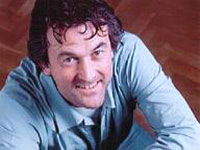 Extreme Make-Over
Extreme Make-Over
Johan de Meij
The piece is inspired by a number of musical references from the compositional output of the great Russian composer Tchaikovsky - most notably the Andante Cantabile (the second movement) of his String Quartet No 1 in D, Opus 11, which was written in 1871) - the one that brought tears to the eyes of Tolstoy when he heard it played in 1876.
Johan de Meij is an extremely intelligent and thoughtful composer of note, who has written many fine original compositions, symphonic transcriptions and arrangements of film scores and musicals.
He has won a number of international prizes and is recognised both in his home country and abroad as a composer of distinction. ‘Extreme Makeover' reveals itself to be a work of at times inspired originality.
The piece itself is about 16 and a half minutes long and basically falls into a number of clearly defined sections. It is not however a theme and variations - not by any stretch of the imagination.
The composer writes:
The main theme of the Andante Cantabile is based on a Russian folksong. This theme is introduced in its original form by a brass quartet consisting of two cornets, horn and euphonium.
At the theme's reprise, muted cornets sneak, almost inaudibly, alongside the four soloists and elongate each note of the melody, as though the sustaining pedal on a piano has been depressed.
The first metamorphosis emanates from a single tone, to which the two successive tones from the theme are added in bell like chords. The addition of the lower second results in a completely new sound world.
Anticipating the canonic theme from the finale, a timpani solo formed the transition to the Alla Marcia. This movement is composed in a robust neo classical style and is peppered with quotes, including fragments from the Fourth and Sixth Symphonies and the Fantasy Overture Romeo and Juliet.
The following movement features ten tuned bottles played by members of the cornet section. This group provides the accompaniment for an extensive marimba solo, gradually producing a sort of gamelan effect.
In composing for the tuned bottles, I have applied the ‘hoketus’ technique: each player produces a single note of the melody or the chord.
This fragile movement is joined seamlessly to the finale, a canonic treatment of the theme. Hurtling through each instrumental group, it leads us to a festive conclusion.
Johan de Meij
September 2004
Used at European:
Set work 2005
Own choice selection
2006: Black Dyke
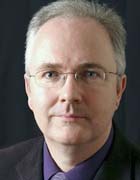 Journey to the Centre of the Earth
Journey to the Centre of the Earth
Peter Graham
The French novelist Jules Verne (1828 - 1905) created a unique blend of science and adventure in his series of novels known as "Voyages Extraordinaires".
Written in 1864, Journey to the Centre of the Earth is on the surface an adventure story but as the commentator Diana Mitchell has observed on a deeper level can be seen as "man's journey of himself, always probing deeper for what lies at the centre".
The novel takes the form of a sequence of diary entries by Axel, nephew of Professor Otto Lidenbrock. The pair follow coded instructions in an old document guiding them to Iceland where, together with their guide Hans, they enter the open crater of an extinct volcano Snaefells and pursue a trail to the centre of the earth.
There follows "hair-breadth escapes and ventures perilous" as the intrepid explorers encounter a vast interior world.
This music presents scenes from the novel in a rough chronological order. The work opens on the dark and brooding Summit of Snaefells and follows the adventurers as they descent into the bowels of the earth.
En- route they encounter the Wonders of the Terrestrial Depths (an electrically illuminated sky), a dream sequence during which Axel witnesses a Battle of Antediluvian creatures before the final Ascent and Homecoming.
The key scene of the book (and the music) reflects on Axel's despair as he becomes separated from the his companions and is Lost in the Labyrinth. His subsequent rescue is due to an acoustic phenomenon whereby he hears the voices of his friends in The Whispering Gallery.
Journey to the Centre of the Earth is dedicated to Ryan and Megan, who love the story!
Peter Graham
Cheshire
March 2005
Used at European:
2005: Black Dyke*
2006: Willebroek; Newtongrange
2007: Lyngby Taarbaek
*Black Dyke won the own choice section of the contest
 Vienna Nights
Vienna Nights
Philip Wilby
Philip Wilby's masterful fantasy on Mozart's Piano Sonata in A, K331 is arguably his finest work for brass band and will become an instant classic of the genre.
No other composer for brass could so successfully bring together two such diverse strands of compositional matter and architecture into one coherent symbiotic relationship like he has done here.
It is a breathtaking achievement of subtle mastery for Wilby has achieved the musical equivalent of turning base metal into pure gold. This is brass band compositional alchemy, and the result is quite startling.
The key is perhaps found in the subtitle to ‘Vienna Nights' itself. Wilby calls it a ‘fantasy' which allows him the scope to develop his own thoughts and themes, structures and ideas without ever losing the purity of the original thematic material.
It is not an arrangement, realization, transcription of straight copy and paste job of the original with added on bits. If it were, it would have been a disaster. What we get therefore is a classically structured piece in Sonata form where the germ of the original musical thought is developed without ever changing its historical DNA.
The Mozart music that forms the basis of the work is untouched and allowed to stand alone in all its glory, however brilliantly Wilby surrounds it with his kaleidoscopic array of inspired personal ideas.
It is therefore a piece that delineates the dichotomies between the two composers to the full - the almost simplistic beauty of Sonata and the joie-de-vivre of the Turkish Rondo allied to the intervening more muscular and complex layers of Wilby and his own homage to the 12 tone harmonics of Schoenberg. The result as we have said, is quite something indeed.
The piece, played in one continuous movement is broken into the sonata form: The first entitled ‘Freud's Dreams' is itself homage to the great thinker and father of psychoanalysis.
This short introductory section leads to part 2 – ‘Variations' which itself is broken into a series of continuous variations on the Mozart theme from the Piano Sonata.
The nine mini variations cover just about every aspect of musical development you can think of, but always at their core is a pure circulatory bloodline, like a series of veins and arteries connecting every musical strand to the Mozart heart.
The third section is marked ‘Scena and Notturno' and is the most operatic in style and content before that itself sets the scene for the finale.
This is the romp of the ‘Finale Alla Turca' brought to life with an injection of pace that would leave the sprinter Marion Jones in her tracks.
This is still very much Mozart, but Mozart on a diet of Red Bull chasers - it's wickedly joyful, devilishly difficult and quite amazing to listen too (and we suspect to play).
Iwan Fox
Used at European:
2007: Stavanger; Scottish Co-op
2008: Grimethorpe Colliery; Brass Band Fribourg
 Contest Music
Contest Music
Wilfred Heaton
Contest Music was written in 1973 and was to be used as the test piece for the National Championships of Great Britain.
It wasn't, and the decision not to use the work was quite simply a disgrace. It finally found favour with the organisers in 1982 and since that time it has widely been acknowledged as one of the very finest compositions for brass band ever written.
Ironically, the work was actually played at the Royal Albert Hall before that 1982 date, when the Swedish Band, Solna Brass conducted by G. Borkland used it as their own choice selection at the inaugural European Championships. Since that time it has been played at very nearly every major brass band contest both in the UK and abroad.
The programme noted for the 1982 National Finals state that Contest Music follows a tradition of similar pieces for the brass medium by Elgar, Holst and Ireland in placing musical content first and instrumental virtuosity second. The music exists solely for itself and allies itself with 18th and 19th century classicism.
The work is in three movements - fast, slow, fast. In the outer movements the constant metamorphosis of material reflects classical procedures. The middle movement in contrast contains no development and is lyrical from beginning to end.
I. Adheres roughly to Sonata form, but the re-capitulation material is presented in inverted and reversed order.
II. Opens and closes with a tonally ambiguous dialogue between trombones moving harmonically and cornets in a single line. Between lies a continuously unfolding melodic line, restrained both dynamically and emotionally.
III. Is akin to the classical Rondo with a four fold statement of the main theme, its outline being changed and its pitch raised at each repetition.
Iwan Fox
Used at European:
1978: Solna Brass
1984: CoryManger Musikklag
1985: Solna Brass
1986: Black Dyke*; Stavanger
1987: Black Dyke; De Waldsang
1990: CWS (Glasgow)
1992: Tredegar
1994: Strabane
1998: Brighouse & Rastrick*
2007: Fodens Richardson
*Black Dyke and Brighouse & Rastrick won the own chocie section of the contest
 Concerto Grosso: Opus 61A
Concerto Grosso: Opus 61A
Derek Bourgeois
'Concerto Grosso' was written by the composer as far back as 1979, and was originally not a full brass band composition.
The initial piece was in fact written for the Philip Jones Brass Ensemble, a ten-piece made up of four trumpets, 1 French horn, 4 trombones and a tuba and was written especially for Philip Jones' farewell concert.
Bourgeois was at that time the Professional Musical Director of the Sun Life Band in Bristol and when in 1982 the band was asked to perform on the BBC radio programme "Bandstand" the composer took the opportunity of re-scoring the work for full band.
Although an immense "tour de force" the composer believes it to be within the capabilities of most top class Championship bands, although he believes that organisers of the major contests have been reticent to use the piece due to its length – it is 20 minutes long.
The term ‘Concerto Grosso’ is used by the composer in the baroque sense as throughout the work much is made of smaller ensembles featured against a larger accompanying background.
Written in three main parts it is played as a continuous piece and explores in each of its sections material that ranges from the technically brilliant to the sombre, beautiful melodic yet with a real sense of fun and wit.
Each of the major solo players within a band has material that extends their capabilities to the limit whilst the ensemble is tested to the full.
Influences of jazz, blues an even a Charles Ives inspired rumba are heard throughout although the initial motto theme announced at the outset returns time and time again throughout the piece.
It remains today perhaps the most vividly brilliant of brass band compositions.
Iwan Fox
Used at European:
2000: Eikanger Bjorsvik*
2002: Yorkshire Building Society*
2003: Yorkshire Building Society
2005: Buy As You View Cory; Whitburn
2008: Brass Band Buizingen
* Eikanger Bjorsvik and Yorkshire Building Society won the own choice section of the contest.
 Music for Battle Creek
Music for Battle Creek
Philip Sparke
Now this is a difficult test piece.
If they were to give out medals as they used to do for winning the Nationals all those years ago then the players of all the bands that have to perform ‘Music for Battle Creek’ this weekend should deserve to wear more gongs on their band tunics than Herman Goering used to show off.
Solo cornet and principal euphonium players in particular could well be in line for Congressional Medals of Honour if they can escape unscathed from this particular ‘Battle’, whilst trombonists, horn, baritone, and soprano players could well end up with a Purple Heart or two – some possible posthumously. There could be more musical victims on this one than a particularly gruesome episode of American television programme CSI.
The man responsible is of course a Brit - Philip Sparke, who has done it again with a wonderfully exciting and colourful test piece, which just happens to have more pyrotechnical hoops in it than a Chinese fireworks circus act – Americana style.
Written for the Michigan based professional Brass Band of Battle Creek - hence the title it is certainly a showcase work for a band that contains a whole platoon full of star performers on any instrument you may care to mention.
As a result it is geared towards their particular brand of professional expertise, technical virtuosity and intuitive appreciation of musical style. It’s everything you could imagine you would like to hear world class American performers play in 15 minutes of music – all wrapped up in a musical Star Spangled Banner.
Excitement, bravado and virtuosity was the stated aim of Philip Sparke with the piece, and excitement, bravado and virtuosity is what you get by the bucketful.
It should not therefore come as a surprise that it is heavily scored, with just about something for everyone to do in just about every bar of the piece. Why waste an opportunity to allow brilliant players the chance to show off – anyone old Tom, Dick or Bubba can count bars rest.
The three main sections of the work (there is a small connecting Interlude between the first and second sections) are played continuously, but are easily identifiable.
The opening fanfares give way very quickly to the first major hurdle – a stunningly difficult unison duet cadenza between the solo cornet and euphonium which stretches technique and nerve like a piece of Wrigley’s gum.
You will be able to identify any principal cornet or euphonium at the hall on the day by their deathly pallor, for all of them would have had sleepless nights about the bars 13 – 28, with bar 24 in particular an absolute nightmare.
Get over this and things get a little easier – but what a start: nail it and glory may beckon; get out of synch or clip a few and you could possibly say goodbye to having any hope of making an impression early doors.
All through the band ensemble is required to perform at a very high level with detailed filling and precision motifs allied to very specific dynamics. It’s a corkscrewing roller coaster at times, but a roller coaster that could just leave the track with horrendous consequences if a band opts for too much speed and very little subtlety – the depth of the scoring at times is bewildering.
Amid it all though class will surely out, with the opportunity for the very best players on the day to make significant impressions even in the tiniest of places. Keep an ear cocked for any soprano player who can ping out top E’s at one point and percussion teams who can add colour and clarity – those who just whack it thinking they are adding to the excitement will surely be taken out with a well placed snipers bullet of a handful of lost marks from the judges box.
The short interlude finishes off the opening third of the piece and by then you should be able to recognize whether you are hearing a band that can play the test piece and are capable of showcasing their talents to the full, or those who think they can and are using more camouflage make up than Joan Collins in an old Dynasty episode.
The Elegy that follows allows the best bands to also reveal their ability to perform at the other extreme – this time in dynamics and controlled musicality. Small declamatory solo episodes will certainly test the baritone, trombone, flugel and horn, but once again it will be the solo cornet and euphonium that will bear the brunt of front line battle.
The key elements will surely be the expressive Tranquillo (which again asks so much of the main soloists in unison) and the ethereal Luminoso, which of course means bright, but bright in an almost unworldly way – magical if it comes off.
Marked ppp, despite the complexity of the scoring it is a quite sublime moment of brass writing. Soprano players who cannot play very, very quietly without the aid of a mute will hold the key. How many will take the safety option we wonder and chicken out?
The following Estatico will also take some playing too – almost Wagnerian in its glory (and again so intricate in construction) before a final moment of tranquil repose before the finale.
Now comes the tricky bit. The Rondo Finale is marked minim = 120, but that may be a touch elastic in the hands of the best bands. The best bands will also be the only ones to capture the style of the jazz inspired writing.
Iwan Fox
Used at European:
2008: Willebroek*; Cory; Brass Band De Waldsang
*Willebroek won the own chocie section of the contest
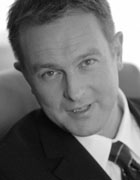 Spirits of Puccini
Spirits of Puccini
Hermann Pallhuber
Spirits of Puccini uses quotations from the Operas of Giacomo Puccini (1858 - 1924).
The famous motifs are taken from Tosca ("E lucevan le stelle" - Act 3) and Turandot ("Nessun dorma" -Act 3). Further on there is the solo of Lauretta ("O mio babbino caro") from Gianni Schicci in an almost literal quotation (played by the Principal Cornet) and a quite funny little persiflage of the aria from Tosca "Senti l'ora e vicina" (Tosca - Act 3).
However, beyond all of those quotations there reigns the main theme of the piece – a modest (original, but non Puccini) tune - introduced by the Principal -, developing from a simple recitativo, passing a fugato and leading into a mighty Hymn of "Italian Belcanto".
Spirits of Puccini holds ready testing moments for each of the principal players of the band’s sections. It demands skills both in developing smooth as well as vibrant sounds and in giving the right colours to the different atmospheres of the piece.
Even if it is music inspired by the famous Italian composer Puccini, the composer tried to create a piece of real Band Music as the point of origin - sticking to both: the Italian influences and the styles of modern British Brass banding in his 15 and a half minute duration.
Hermann Pallhuber
April 2009
S tanding on the Shoulders of Giants
tanding on the Shoulders of Giants
Peter Graham
“If I have seen further it is by standing on the shoulders of Giants”
Letter from Isaac Newton to Robert Hooke, 5 February 1676
The art of brass playing embraces a range of diverse approaches and styles. Nowhere is this more apparent than in the musical melting pot of the USA.
On the Shoulders of Giants pays tribute to this diversity and to the great American brass virtuosi whose legacy has provided the foundation for countless brass giants of today.
The opening movement, Fanfares, reflects on the legendary Chicago Symphony Orchestra brass section. It has been suggested that the much-admired and distinctive style of the CSO Brass was initially driven by the Germanic repertoire favoured by the early music directors. Here the opening bars from the finale of Bruckner’s 8th symphony provide the departure point for the musical journey.
The work continues (attacca) with an Elegy. America’s role as the birthplace of jazz and two of her leading brass lights are remembered here – Miles Davis (through the sound world created for him by Gil Evans) – and the father of lyrical trombone playing Tommy Dorsey. In acknowledgement that jazz owes its origins to Negro spirituals, the gospel song Steal Away underpins the movement.
The finale, a Fantasie Brillante, pays homage to the turn of the century brass virtuosi of Sousa Band fame. The centrepiece of the movement finds Herbert L. Clarke, Arthur Pryor and Simone Mantia stepping from the mists of time to deliver snippets from their greatest solos (together with passing references to Sousa’s highest paid soloist, drummer August Helmecke).
Moments of individual virtuosity lead to a series of brass band power chords - giant footsteps in musical imagery – as present day brass giants conclude this tribute to their predecessors.
As a footnote it is wholly appropriate that this world premiere takes place in the birth country of one to whom all brass players owe an enormous debt of gratitude, Adolphe Sax.
Peter Graham
Cheshire
April 2009















